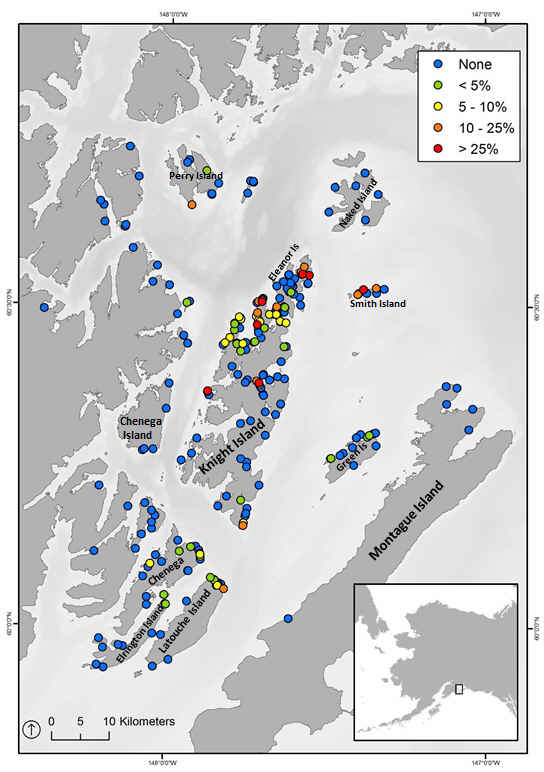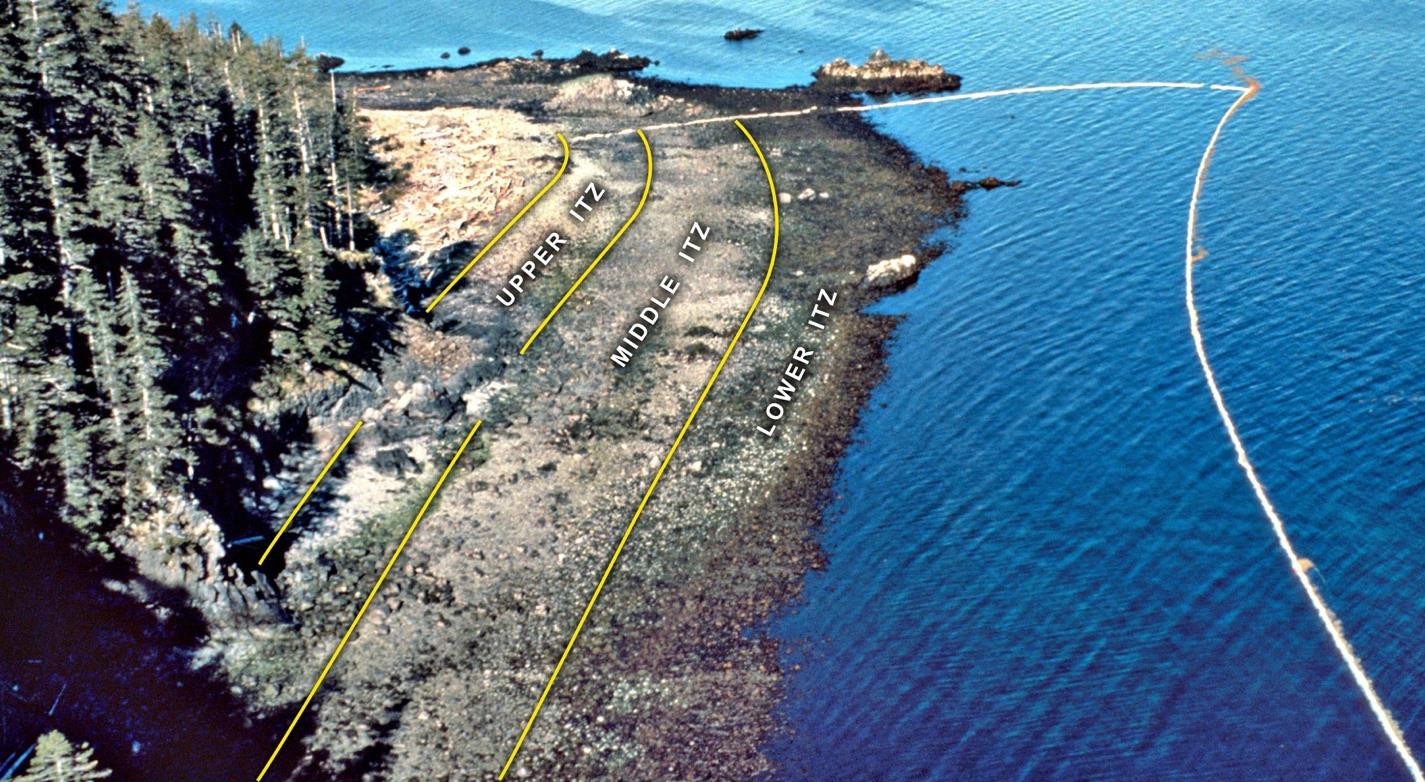Studies documented that lingering oil occurs in discontinuous patches in the subsurface, at average depths of 5 to 7 inches. It is estimated that approximately 23,000 gallons of oil remains, 0.2% of the initial spill volume. Figure 2 shows where oil has been located in pits dug into the subsurface of some of the islands of Prince William Sound during the 2001, 2003 and 2007 field surveys. Locations marked in red are shoreline segments where more than 25% of the pits encountered oil, orange dots mark where 10 to 25% of the pits encountered oil, yellow dots are where 5 to 10% of the pits encountered oil, green dots are where 1 to 5% of the pits encountered oil, and blue dots indicate locations where no oil was encountered.

Michel et al. (2010) estimated the total area and mass of oil by oiling categories for the same area that Short et al. (2004) used in their calculations. A comparison shows that there is very good agreement between the two approaches. The Exxon Valdez spill released 10,800,000 gallons of North Slope crude oil, which converts to 39,560 metric tons. Thus, the Michel et al. (2010) estimate of any subsurface oil in Prince William Sound as of the period of 2001-2007 represents 0.25% of the total spill, the estimate for areas with lightly oiled residues represents 0.09% of the total spill, the estimate for areas with medium-oiled residues represents 0.08% of the total spill, and the estimate for areas of highly-oiled residues represents 0.07% of the total spill volume.
Carls et al. (2016) re-sampled six segments in Prince William Sound in 2015, using the same methods as Short et al. (2004) in 2001. They dug 400 pits in these six segments and found that there has been essentially no change in the percent of pits that were oiled and thus no significant changes in the estimated total area with subsurface oiling at each site. The authors also reported no significant differences in average subsurface oil mass per unit area for areas reported by Short et al. (2004) as having light, medium or heavily-oiled residues.
Though this investigation was more limited in location and scope, these results imply that there is little ongoing change in the amount of subsurface oil in Prince William Sound at present.

